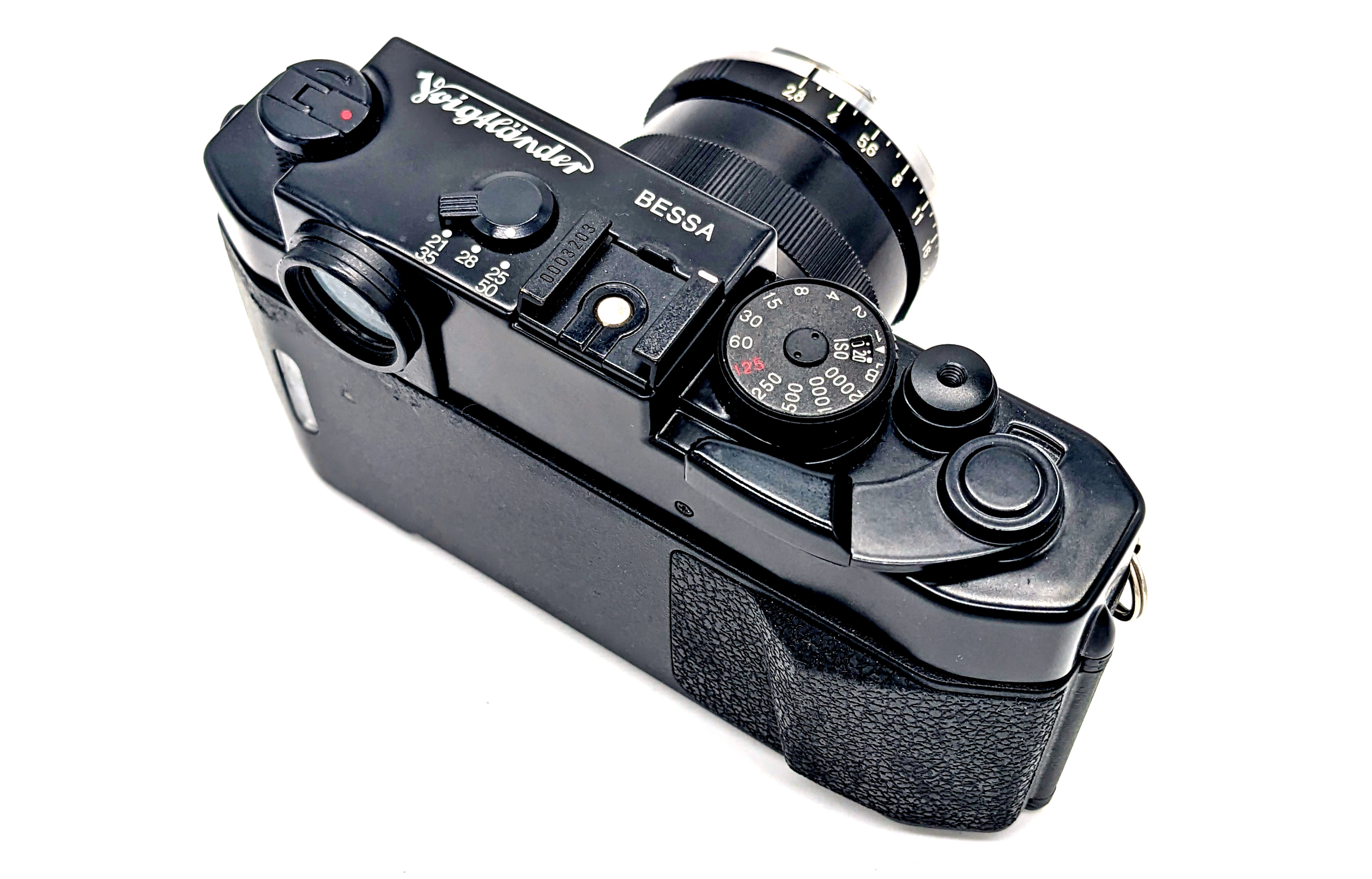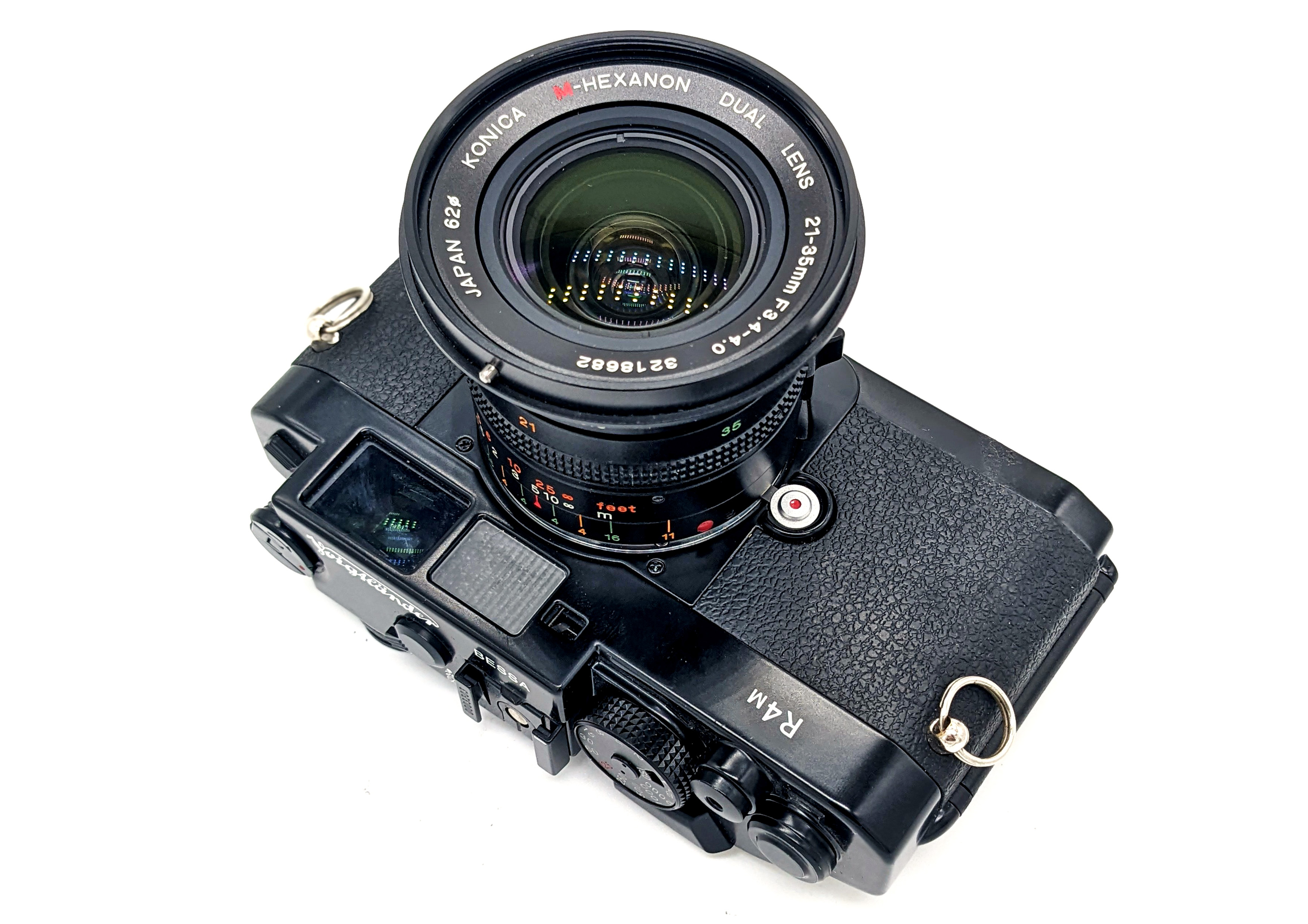
Introduced in 2006 and discontinued in 2015, Voigtlander’s Bessa R4A and R4M remain unique in rangefinder camera history because of their ultra-wide viewfinders with framelines for 21, 25, 28, 35, and 50mm lenses. While probably not fully appreciated during their introduction and run, both of these models have rapidly increased in both popularity and price. Is the R4 a camera you should add to your rangefinder arsenal? Sure, why not?
Although the Bessa “R” line of rangefinder cameras all have a certain “1980s SLR” feel to them (probably because Cosina produced many of the cheaper 1980s and 1990s manual-focus SLRs), the R4A (electronic shutter) and the R4M (mechanical shutter) are perhaps the most interesting of the bunch. Regarding the body design, the Bessa Rs are not much to look at, exalting function over form. While the R2 and R3 series did a relatively decent job at providing the basic functionality and experience of the Leica M2 and M3, respectively, at a fraction of the cost, the Bessa R series all have three features over any Leica M film body: a top shutter speed of 1/2000 (instead of 1/1000), a flash sync of 1/125 (instead of 1/50), and user-selectable framelines.
Today, Bessa R cameras have never been more expensive. For me, even though they have some functionality advantages, the Bessa R/R2/R3 cameras, for the cost, do not present particularly compelling cases over a Leica M body. On the other hand, the super-wide viewfinder of the R4 series has no Leica M equivalent. If you are a wide-angle rangefinder shooter, is the Bessa R4 a better system for taking photos than using various shoe-mounted external viewfinders or even Leica’s Frankenfinder? The answer to that question is probably a qualified “Yes.”
Bessa R4M Specifications
| Lens Mount | Leica M |
| Viewfinder Magnification | 0.52x |
| Rangefinder Baselength | 19.24mm |
| Framelines | Parallax-Corrected 21/35, 28 & 25/50 |
| Shutter Speeds | B, 1 sec – 1/2000 |
| Meter | TTL Center-Weighted |
| Batteries | 2 x SR44 |
| X-Sync | 1/125 |
| Weight (Body) | 440g |
| ASA Range | 25-3200 |
| Shutter | Vertical Metal Focal Plane |

Operation
The Viewfinder: The primary draw of the R4M is its low-magnification, bright viewfinder for wide angle lenses. With any other rangefinder camera, hotshoe accessory finders would be required for 21mm and 25mm (and in some cases 28mm) lenses. The R4M lives up to the hype in that regard. The user-selected, parallax-corrected 21/35, 28, and 25/50 framelines make focusing and framing a breeze. The 21mm frameline does hug the absolute outside of the frame, while the 50mm frameline is small.
Metered Manual Operation: Unlike the R4A that provides aperture-priority autoexposure, the R4M employs a “metered manual” operation, like a traditional mechanical-shutter camera bodies and the Leica M6/MP. The R series has an LED indication system for metering that is activated through a half-press of the shutter button. Unlike metered Leica Ms that display arrows for over/under exposure, the Bessa reads out exposure in displayed half stops of exposure: from -2 to +2. Because silver oxide batteries only power the light meter, the R4M can be used at all shutter speeds without them.
Short Effective Rangefinder Baselength: To create the wide-angle viewfinder, some compromises had to be made. The 19.24mm effective rangefinder baselength is about the same as the early 1970s Leica CL. The baselength is more than adequate for accurate focusing of lenses 35mm and wider.
Longer Lenses Partially Block the Viewfinder: It is obvious that the Bessa R series was designed to accommodate many of the slimmer first-generation Voigtlander lenses, like the 21mm f/4, 25mm f/4, 28mm f/3.5, 35mm f/2.5, and others. Lenses that are physically longer tend to block a portion of the viewfinder, especially if one uses a lens hood. The 21-35mm f/3.4-4 Dual Konica Hexanon, which is pretty much an ideal all-around lens for the R4, significantly blocks the 35mm frameline.

Averagely-Quiet Shutter: The vertical metal mechanical shutter is also not particularly quiet. Perhaps not as loud as the mechanical SLRs of the 1980s, but noticeably louder than a Leica M camera.
Reflected LEDs in the Viewfinder: Due to some design oversight, the LEDs for the meter in the viewfinder sometimes reflect off the sides of the assembly.
The 21mm & 50mm Framelines: While the R4’s 21mm frameline is usable, what the viewfinder does not show is the actual distortion in the final image. In other words, while the viewfinder shows a flat view, that is not at all what the shot will look like, especially at closer distances. The framing at 21mm and 25mm is also not terribly accurate, with the subject image being somewhat smaller on the resulting negative than what was framed through the viewfinder. For its part, the 50mm frameline is pretty small (think of the 90mm frameline on a Leica M3).
Platform for Contax & Nikon Rangefinder Lenses: What is nice about the Bessa R series in general is the ability to change framelines manually. This means that using the various Contax or Nikon rangefinder adapters to Leica M becomes much easier, as they are all keyed to Leica M 50mm framline.
Bessa Accessories: The Bessas had a few useful accessories. Of note, there is a bottom trigger winder and a decent body case. I would suggest getting one of the cases for camera protection. The trigger winder is kind of fun and does not interfere with also using the lever advance after a shot.

Conclusions
The R4M is a fun-to-use camera that occupies a unique place in rangefinder history because its super-wide finder. The R4s were largely overlooked at the time apart from a dedicated few, and it is nice to see folks appreciating them now. It is perhaps an ideal travel rangefinder camera for those who prefer the 21-35 range. However, R4s are a bit overly-expensive at the moment given their relative scarcity and a renewed demand for M-mount film bodies. The only real downsides of the R4 are that: (1) the viewfinder does not effectively communicate the visual distortion in the finished shot; and (2) the framing at the widest settings (21mm mostly and 25mm to a lesser extent) is not terribly accurate.
great review David. I am wondering about the material of the body, is plastic or a kind of metal? And what lenses would you recommend from when it was released in 2006.
The R4 has a metal body. The contemporary smaller VC lenses that work well for it were the 21mm f/4, 25mm f/4, 28mm f/3.5, and 35mm f/2.5. Larger 21/25/28/35 lenses will all have some more VF blockage.